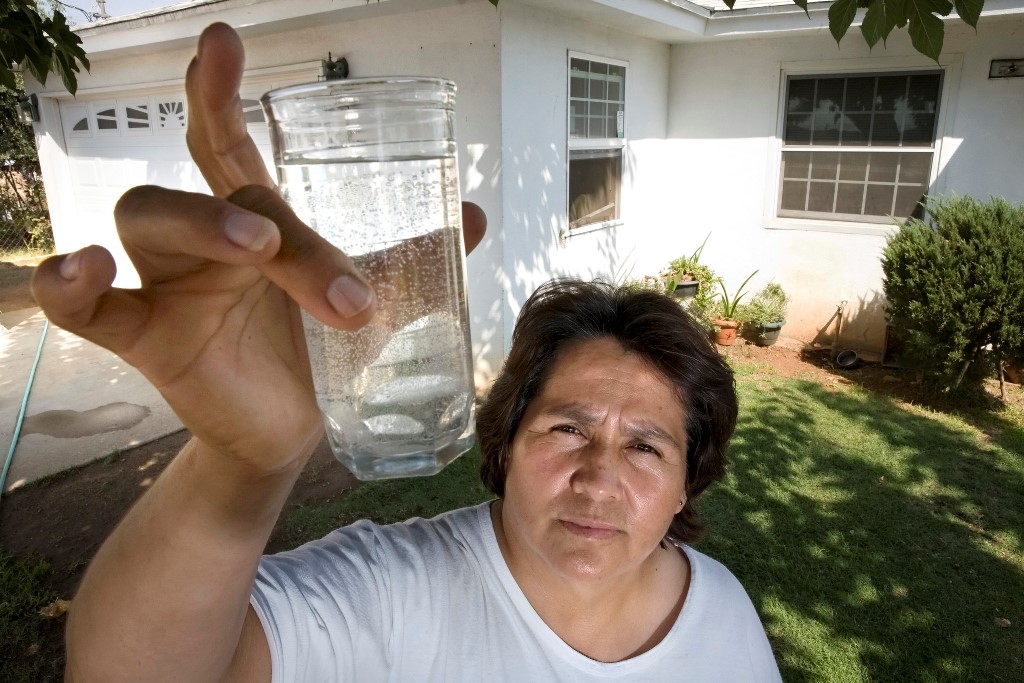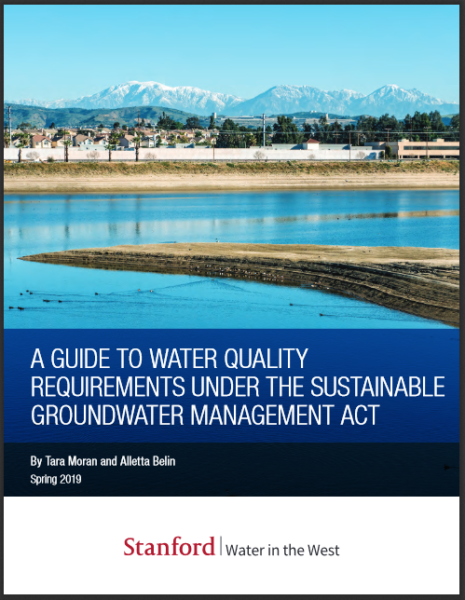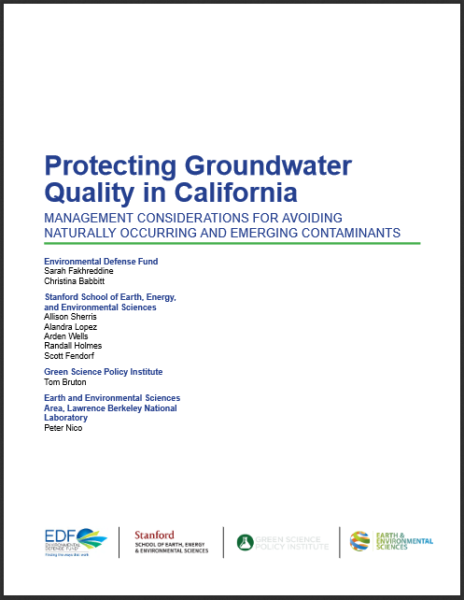
SGMA directs groundwater basins to be managed in a manner that avoids ‘significant and unreasonable’ impacts to groundwater quality. To comply, GSAs must understand federal, state and local regulations. A first step is to assemble existing data and information on groundwater quality within a GSA’s basin to determine what further data should be acquired. When considering actions such as groundwater recharge, GSA’s must appreciate actions that may cause unintended impacts to water quality. A hurdle for Westlands Water District, for example, with Aquifer Storage and Recovery (ASR) projects, is contamination of imported project water by storage in a geologically challenging and polluted aquifer.
Groundwater quality can be impacted by a host of natural and human-caused sources. Aquifers can become contaminated by a single point source, such as a decommissioned military base, or by runoff from widespread areas, such as agricultural fields using fertilizers or urban stormwater carrying pollutants from roadways and urban landscapes. Even within a single aquifer, groundwater quality can change with the level of the groundwater table itself. Groundwater quality generally degrades with increasing depth within an aquifer, thus declining groundwater levels can lead to poorer water quality and concentration of contaminants.
For more information on groundwater quality, visit the USGS webpage for Groundwater Quality
Key publications
A Guide to Water Quality Requirements Under the Sustainable Groundwater Management Act
 Unlike most other undesirable results, water quality degradation is the subject of robust federal, state and local regulatory regimes carried out by a number of different entities. While the State and Regional Water Resources Control Boards have the broadest responsibilities to protect groundwater quality, many other agencies also have relevant responsibilities.
Unlike most other undesirable results, water quality degradation is the subject of robust federal, state and local regulatory regimes carried out by a number of different entities. While the State and Regional Water Resources Control Boards have the broadest responsibilities to protect groundwater quality, many other agencies also have relevant responsibilities.
This Guide is intended to assist GSAs along with other agencies and stakeholders in understanding the meaning of water quality degradation, and to provide insights into how GSAs can successfully fulfill their legal responsibilities regarding groundwater quality.
Guide to Protecting Drinking Water Quality Under SGMA
 GSPs must identify groundwater quality issues including known groundwater contamination locations and must also collect data from each aquifer to determine groundwater quality trends. Data gaps must be identified and addressed. When developing minimum thresholds and measurable objectives for degraded water quality, GSAs must consider existing drinking water standards and identify drinking water supply wells in order to monitor for degradation of drinking water sources.
GSPs must identify groundwater quality issues including known groundwater contamination locations and must also collect data from each aquifer to determine groundwater quality trends. Data gaps must be identified and addressed. When developing minimum thresholds and measurable objectives for degraded water quality, GSAs must consider existing drinking water standards and identify drinking water supply wells in order to monitor for degradation of drinking water sources.
This publication is intended to be a resource for community water decision-makers who are engaged in the implementation of the Sustainable Groundwater Management Act (SGMA) and are interested in learning about best management practices for addressing drinking water concerns.
Protecting Groundwater Quality in California
 Protecting groundwater quality is an essential component of sustainable water management. However, active groundwater management often focuses on maintaining groundwater quantity – a target that does not always ensure groundwater quality goals are met. In fact, there are many ways in which both supply- and demand-side management actions can inadvertently impact groundwater quality. These impacts range from improving groundwater quality to unintentionally creating new groundwater quality problems.
Protecting groundwater quality is an essential component of sustainable water management. However, active groundwater management often focuses on maintaining groundwater quantity – a target that does not always ensure groundwater quality goals are met. In fact, there are many ways in which both supply- and demand-side management actions can inadvertently impact groundwater quality. These impacts range from improving groundwater quality to unintentionally creating new groundwater quality problems.
The purpose of this document is to provide guidance to groundwater managers, consultants, and stakeholders on groundwater quality considerations associated with management actions and methods for preventing unintended groundwater contamination.
State Water Board FAQ: Water Quality
Questions answered include: Why consider water quality? How do the authorities granted to GSAs in SGMA relate to water quality? Can a GSA set objectives in a GSP that improve water quality in the basin or address water quality issues beyond the minimum requirements of SGMA? Why should GSAs consider the needs of drinking water systems? Where can a GSA find information on water quality data and existing programs in a specific basin?
State Water Board programs to protect groundwater quality
The State Water Board and the nine regional water boards protect groundwater through numerous regulatory and planning programs. The key elements of the water board’s approach include identifying and updating beneficial uses and water quality objectives, regulating activities that can impact the beneficial uses of groundwater, and preventing future groundwater impacts through planning, management, education, monitoring, and funding.
Groundwater Ambient Monitoring and Assessment (GAMA) Program
The Groundwater Ambient Monitoring and Assessment (GAMA) Program is California’s comprehensive groundwater quality monitoring program that was created by the State Water Resources Control Board in 2000. The GAMA Program is based on interagency collaboration with the State and Regional Water Boards, Department of Water Resources, Department of Pesticide Regulations, U.S. Geological Survey, and Lawrence Livermore National Laboratory, and cooperation with local water agencies and well owners.
Assessing groundwater contamination risks in California’s disadvantaged communities
Many communities in California rely on groundwater supplies that are contaminated with pollutants such as metals, nitrates, and hydrocarbons. For low-income and disadvantaged communities with limited access to water treatment technologies, this is an especially challenging problem that puts residents at risk. To help identify communities at risk of groundwater contamination, the Office of Water Programs at Sacramento State University used openly available data for groundwater monitoring and social and economic indicators to map groundwater contamination risk across the state.
Department of Pesticide Regulation’s Groundwater Protection Program
DPR’s Groundwater Protection Program evaluates and samples for pesticides to determine if they may contaminate groundwater, identifies areas sensitive to pesticide contamination and develops mitigation measures to prevent that movement. The Department also adopts regulations and does outreach to carry out those mitigation measures. The measures are designed to prevent continued movement to groundwater in contaminated areas and to prevent problems before they occur in other areas.
Articles on water quality at Maven’s Notebook
- Notebook water quality posts

Explore water quality at the California Water Library
{{ document.post_title }}
{{ document.publisher }} | {{ document.document_date }}
{{ document.post_content_short }}








